Last-Minute NYC Holiday Gift Guide 🎁
We’ve created a holiday gift guide with presents for the intrepid New Yorker that should arrive just in time—

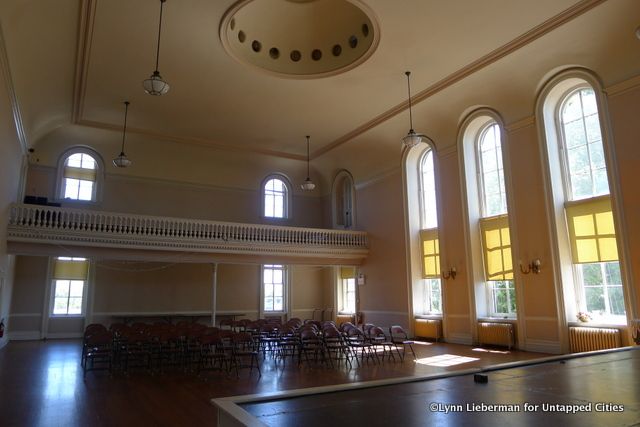
You may recognize the Poppenhusen Institute in College Point from scenes in the television series Boardwalk Empire, where Women’s Temperance League meeting were held in season one and where Margaret Schroeder gives a speech to the League of Women Voters. A tour through the building today reveals the rich history of the building, which included many “firsts”–first kindergarten in the country, home of the First Reformed Church, location of the first Anchor Astoria Masons Lodge and the College Point Knights of Columbus.
Conrad Poppenhusen made his fortune in America manufacturing combs made from hard rubber after he arrived from Hamburg, Germany in 1843. In 1854 he relocated his family and business to College Point, which was known then as a resort area. Poppenhusen set about about creating a “worker’s paradise” by building housing for his employees, paving roads and constructing a multi-purpose structure that would house most of their needs. The main building, known as the Poppenhusen Institute, included a bank, free kindergarten, sewing classes, German singing groups, English classes, a Justice of the Peace and even a sheriff and jail cells.
The building became a New York City Landmark in 1970 and is listed on the National Register of Historic Places (1977). The Poppenhuser Institute continues to serve the community, offering a wide range of programs and rental space.
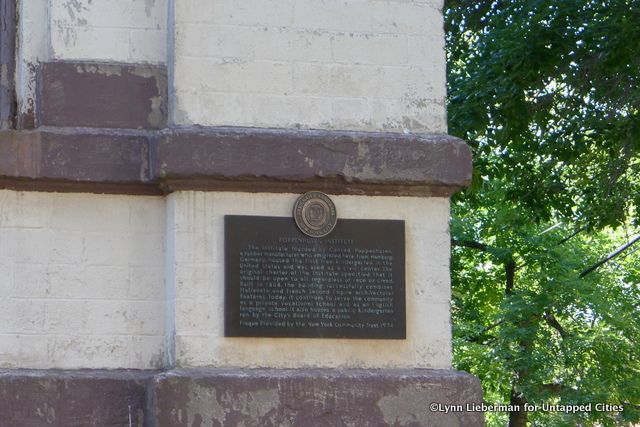
Along the right wall is a bust of Conrad Poppenhusen and opposite is a framed document of his endowment with a marble plaque with the names of the building’s architects – Mundell & Techkritz in 1868.
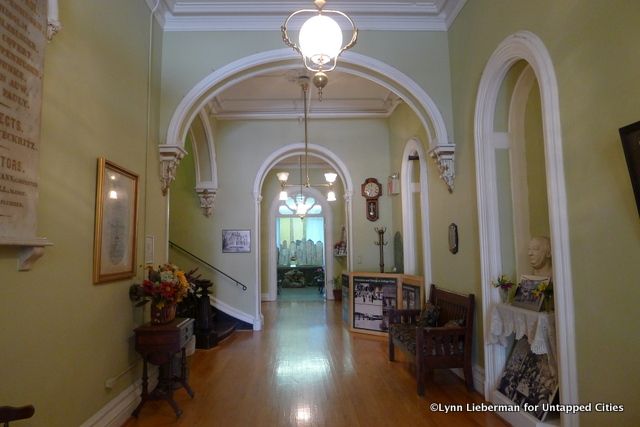
The Poppenhusen Institute cost Conrad Poppenhusen $100,000 to build in 1868 and he left an additional $100,000 as an endowment in the hope that this building would continue to act as a center for the College Point community.
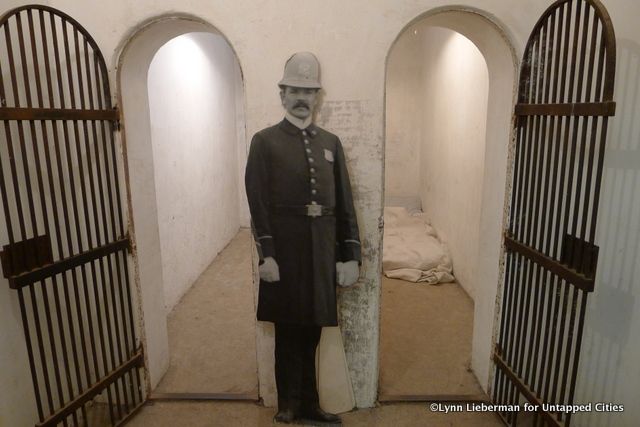
The sheriff’s office has a wonderful audio of what you will see in the jail cells just beyond. When you enter these tiny cells, you will notice the beveled floor from the incarcerated pacing back and forth, and the etching of names and dates can still faintly be seen on the walls.
There are many beautiful rooms on the upper floors that were used as classrooms, game rooms and meeting rooms of all kinds. These rooms are about to undergo a major renovation. It is said that the ghost of Poppenhusen still lives in the attic and so the guides took us one floor up where the floor was soft, the dust was thick and bare brick walls had faint markings of names and dates.
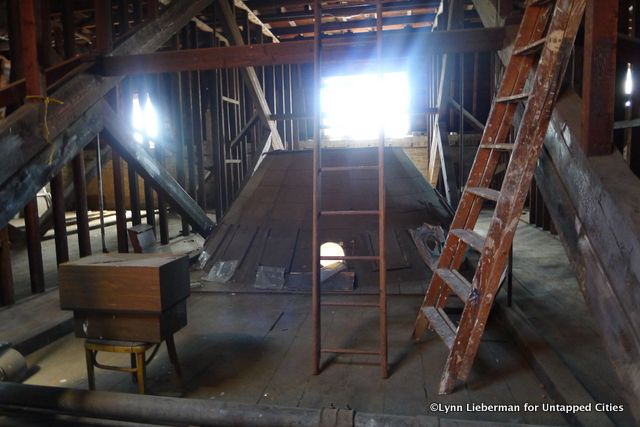
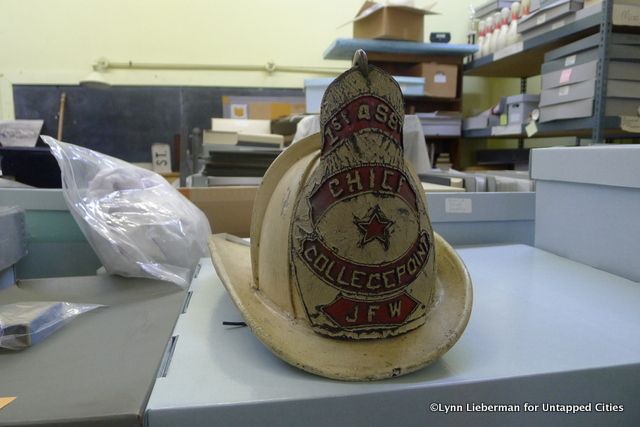
Included in the renovation will be a move of the archives room to the lower level where the rifle range currently exists. Poking around in the archives room, we unearthed wonderful treasurers that will eventually go on permanent display.
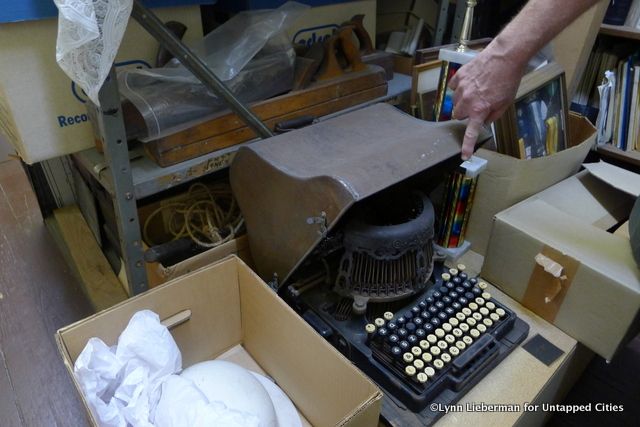
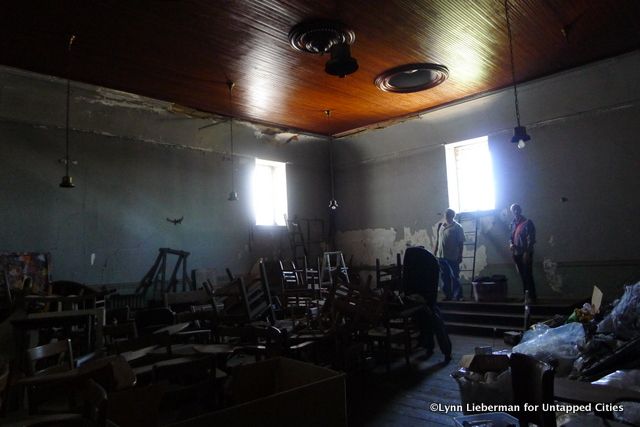
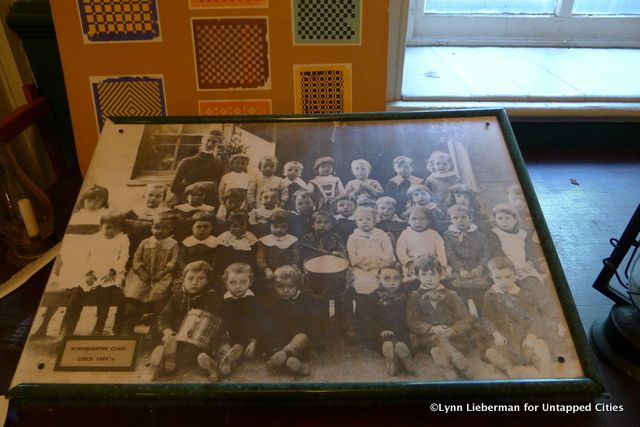
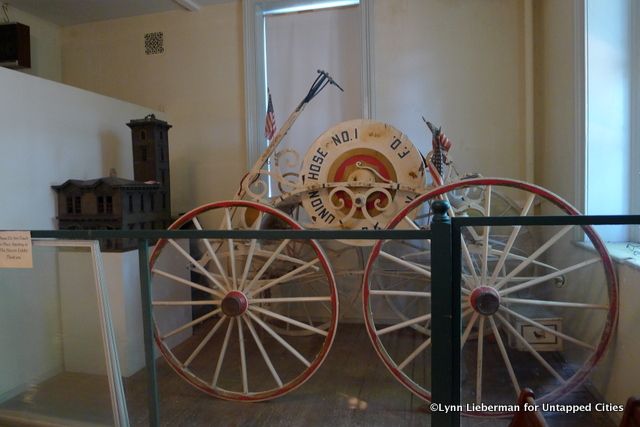
In the background, you can see a model of a typical firehouse with the tall part of the building used to hang and dry the hoses. This particular firehouse is from 1857. One of the original firehose carriers is in the forefront and was pulled by either horse or man.
The sculpture “Coming of the White Man” by American artist Hermon MacNeil sits in the corner of the grand ballroom. You might recognize his name as being the artist who sculpted George Washington as Commander-in-Chief on the north side of the Washington Square Park arch.
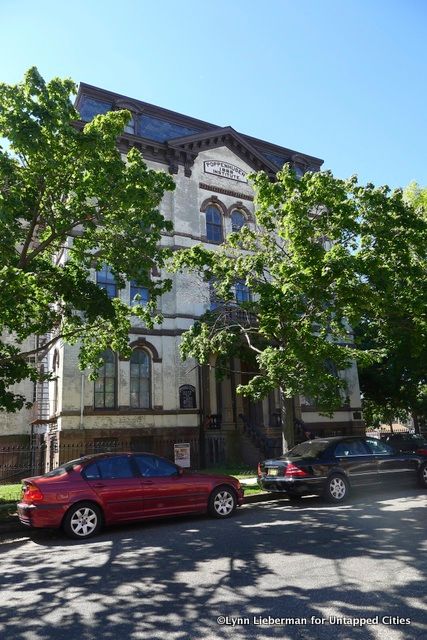
You can follow AFineLyne on Twitter or on Facebook at Harlem Sketches or Greenwich Village Sketches. Don’t forget to head over to the Untapped Shop before you go.
Subscribe to our newsletter